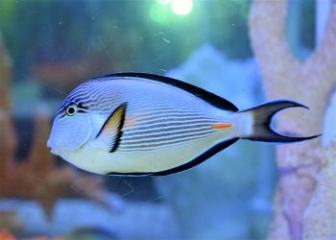Angelfish - Learn about origin, appearance, and how to raise them
Blog | by
Angelfish (Pterophyllum scalare) is an ornamental fish with a graceful, supple appearance, gentle temperament, and a long lifespan of up to 8 - 9 years.
Angelfish (Pterophyllum scalare) or also known as fairy fish is a type of ornamental fish with a graceful, graceful beauty like angels in the water. They have a long lifespan, up to 8 - 9 years, are easy to raise, and are quite cheap, so they are very popular with ornamental fish enthusiasts.
To learn more about angelfish, please refer to the article below from Nice Fish!
Information about angelfish :
| Scientific name | Pterophyllum scalare |
| Common name | Angel fish, three striped angel fish |
| Gender | Animalia |
| Branch | Chordata |
| Class | Ray-finned fish - Vertebrata |
| Set | Sea bass - Perciformes |
| Surname | Emperor fish - Cichlidae |
| Spend | Angelfish - Pterophyllum |
| Lifespan | 8 - 9 years |
Origin of angelfish
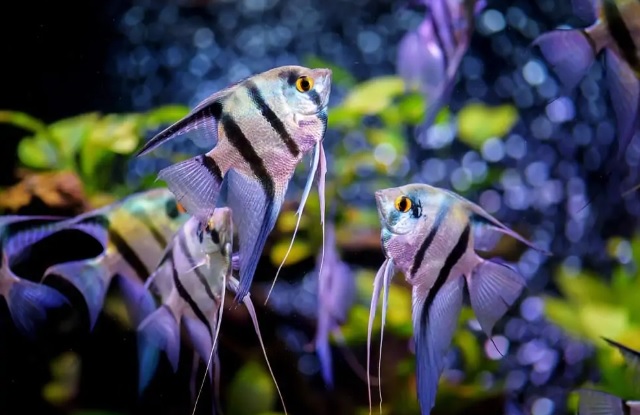
Angelfish or fairy fish.
The angelfish (Pterophyllum scalare), commonly known as the angelfish, is a freshwater fish native to the Amazon River basin and its major tributaries in South America such as the Orinoco and Essequibo rivers. In its natural habitat, this fish lives in freshwater with slow currents, lots of aquatic plants, low light, and low pH.
Angelfish entered the aquarium fish world around the beginning of the 20th century, first in Europe, then spreading all over the world. And now, this fish is bred and developed to create many rich, beautiful, and valuable color variations.
Classification of angelfish
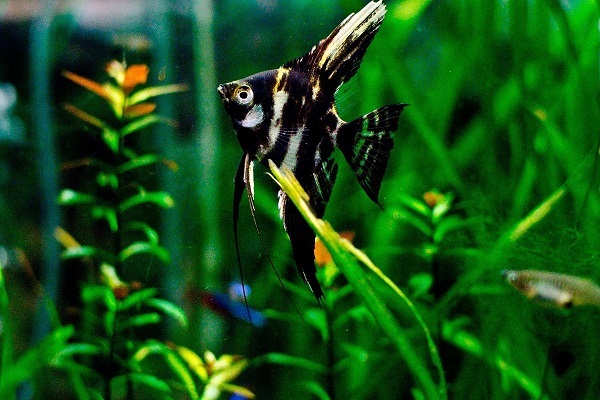
Super beautiful black angelfish.
After a period of breeding, aquarium hobbyists have created many different lines of angel fish, some popular types are as follows:
Sort by color
Angelfish have many different color variations, typically as follows:
- Wild Fairy: Silver with 3 black stripes.
- Fairy Koi : Koi fish color with alternating white, black, orange colors.
- Platinum Angel : The fish's entire body is platinum white, shimmering when illuminated.
- Albino Angel : Pinkish white fish, red eyes, translucent body, quite rare.
- Golden Fairy : The whole body is bright yellow, or mixed with a bit of white.
- Black Angel : The fish's body is black, dark gray, with smooth edges.
- Marble Fairy (marble color) : The fish's body has a very special black and white mottled pattern.
- Smokey Angel : Fish has a smoky, dark brown or black color on the hindquarters.
Classification by fin and body shape
Based on the shape of the fins and body of angelfish, they are divided into the following types:
- Longfin Angelfish : Fish with long caudal and dorsal fins, flexible like silk ribbons
- Short-bodied angelfish : Fish with round, short, petite, cute bodies.
- Pearl Scale Angelfish : Fish with iridescent scales that sparkle in the light.
Angelfish Appearance

Angelfish are diamond shaped, flat, thin.
The angel fish is a species of ornamental fish with a slender body, possessing an extremely graceful and noble beauty, truly "fairy". Let's learn more about the characteristics of this fish species.
- Body : Vertical triangular, flat and thin like a diamond-shaped leaf.
- Size : Average length 10 - 15 cm, height up to 20 cm (including fins).
- Dorsal and anal fins : Long in length, like an angel's wing.
- Pectoral and pelvic fins : Thin, long like threads, moving gracefully in water.
- Caudal fin : Wide spread, triangular or forked.
- Color : Wild type is usually metallic silver with 3 vertical black stripes, through crossbreeding there are many colors such as platinum, gold, koi, albino, marble...
- Eyes : Large, orange, red or light pink.
- Mouth : Small, pointed forward.
Angelfish behavior
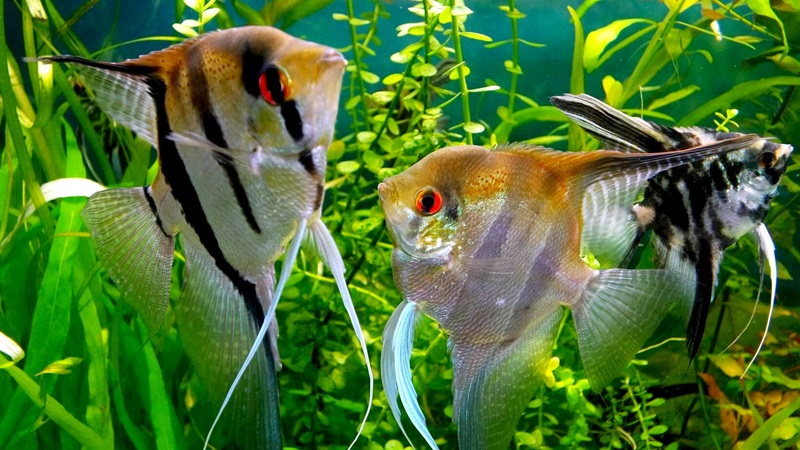
Angelfish live in pairs during breeding season.
In addition to their beautiful appearance, angelfish also have many interesting habits and behaviors. Let's learn about some of the special habits of this fish species.
Gentle but still territorial
Normally, angelfish are quite gentle and sociable with other aquarium fish. However, they are also territorial, especially during the breeding stage or when kept with other fish species in a too cramped tank.
You should raise angelfish with neon fish, triangle fish, and red snapper. You should not raise them with small ornamental fish because they can nibble on their fins, tails, or even eat these baby fish.
Pair up when they reach reproductive age.
When it comes to breeding age, angelfish always pair up in pairs of 1 male - 1 female, and they bond quite strongly. This fish will nest, lay eggs and take care of the young very carefully from other fish.
Swim slowly and gracefully
Angelfish tend to be quite slow, gentle and graceful swimmers, usually moving from the middle to the upper levels of the tank. When relaxed, this fish will swim leisurely, spreading its fins beautifully, but if stressed, it will fold its fins and hide in a hidden place.
Ability to interact with people
Angelfish are very intelligent, they will often recognize their caregivers and tend to swim closer when they see a hand or person approaching.
Angelfish Breeding Guide

A super beautiful angel fish tank.
Angelfish have an average lifespan of 8-9 years if raised and cared for in the right conditions. If you are new to raising this fish, please refer to the super detailed instructions below to be able to raise the healthiest and most beautiful angelfish!
Preparing the angelfish tank
Angelfish tanks must meet the following basic conditions:
- Size : Volume from 80 - 100 liters or more, height over 50 cm so that fish can stretch their fins comfortably.
- Water filtration system : Use external filter or hanging filter to create smooth flow.
- Lighting : Use LED lights with moderate light, turn on 6 - 8 hours a day.
- Aquarium decoration : Plant soft aquatic plants such as ferns and anemones to give the fish shelter. Do not use sharp decorations as they can tear the fish's fins. The bottom of the aquarium can be lined with small gravel or fine sand.
Ideal water environment for angel fish
To help angelfish grow well and live long, the water source in the tank needs to meet the following criteria:
- Temperature : Maintain stable at 26 - 30 degrees Celsius.
- pH : 6.0 - 7.5, can use dried Indian almond leaves or activated carbon to help stabilize pH.
- Hardness : Low to medium.
- Water change : 1 - 2 weeks change 20 - 30% of water in the tank.
What do angelfish eat?
Angelfish are omnivorous fish so they do not require too much food. You can feed them some of the following:
- Dry food : Floating pellets, grain food.
- Live food : Bloodworms, daphnia, red worms (Clean before feeding to limit disease)
- Food portion : Eat 1 - 2 times/day with enough food to finish in 1 - 2 minutes.
Common diseases in angelfish and how to prevent them
Angelfish often suffer from some fungal and parasitic diseases if the water source is polluted, due to food sources... Let's learn about some common diseases in angelfish to know how to prevent them.
| Disease name | Reason | Token |
| White mushroom | Low temperature, stressed fish | White spots appear on fins, body, scales. |
| fin rot | Polluted water, caused by fish fighting | Fins torn, showing signs of wear and gradual decay. |
| Parasite | New fish are susceptible to disease, due to the live food source not being properly processed. | Fish often rub against plants, decorations, swim abnormally |
To prevent the above diseases, you need to note the following:
- Isolate new fish for 7 - 10 days before releasing them into the common tank.
- Maintain stable water quality.
- Add garlic and vitamin B1 to food to increase fish resistance.
How much does an angelfish cost?
Currently, the price of angelfish fluctuates quite widely, depending on the type, color and origin. Below, we have compiled a price list of angelfish according to color and fin type, please refer to it!
| Angelfish | Reference price (VND/piece) |
| Fairies often | 15,000 - 30,000 |
| Koi Fairy | 30,000 - 60,000 |
| Golden Fairy | 25,000 - 50,000 |
| Albino Fairy | 40,000 - 90,000 |
| Platinum Fairy | 30,000 - 70,000 |
| Black Fairy | 35,000 - 65,000 |
| Marble Fairy | 40,000 - 80,000 |
| Long Fin Fairy | 50,000 - 80,000 |
| Altum High Elf | 150,000 - over 500,000 |
Note :
- Prices vary depending on time, store, size, small fish are usually cheaper than adult fish.
- Rare, beautiful, long-finned lines are expensive.
- Buying a combo is usually cheaper than buying each one individually.
Questions and answers about angelfish?
What types of fish should be kept with angelfish?
Angelfish should be raised with gentle, agile fish to avoid conflicts such as guppies, neon fish, zebra fish, mouse fish...
Are angelfish easy to keep?
In general, this type of fish is quite easy to raise, you just need to pay attention to basic water parameters and food quality.
Beautiful angelfish pictures
Let's take a look at the beautiful moments of angelfish, a fish with a proud and elegant beauty, to see why this fish is so loved!

Koi angelfish image.
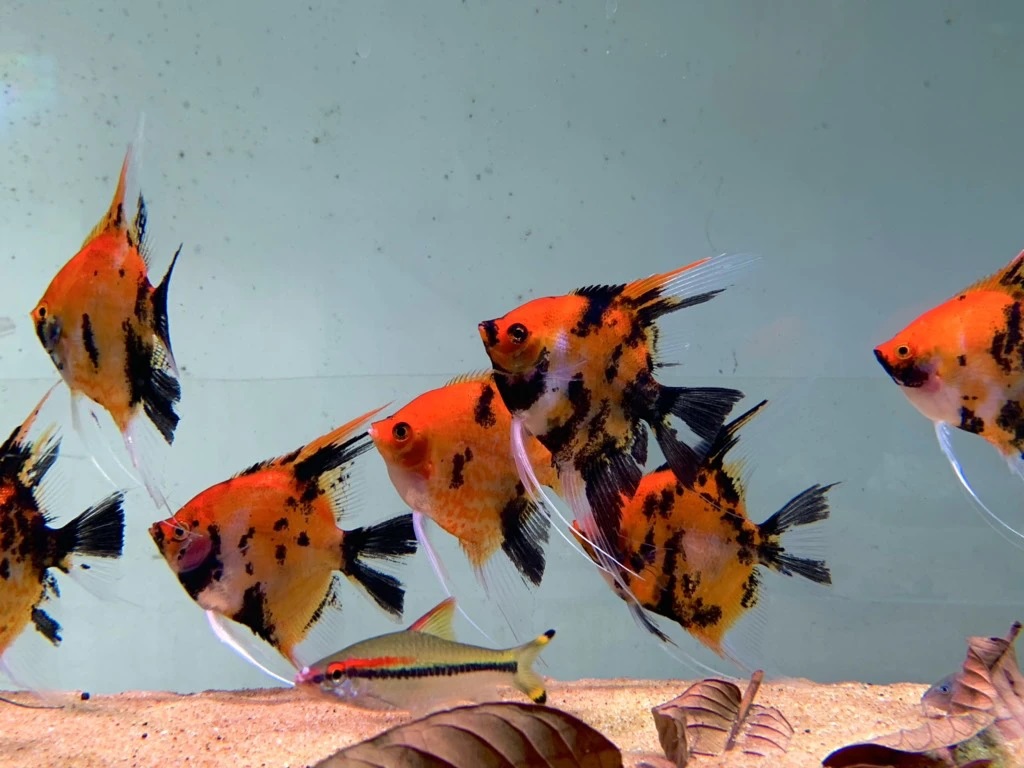
Red devil angelfish.
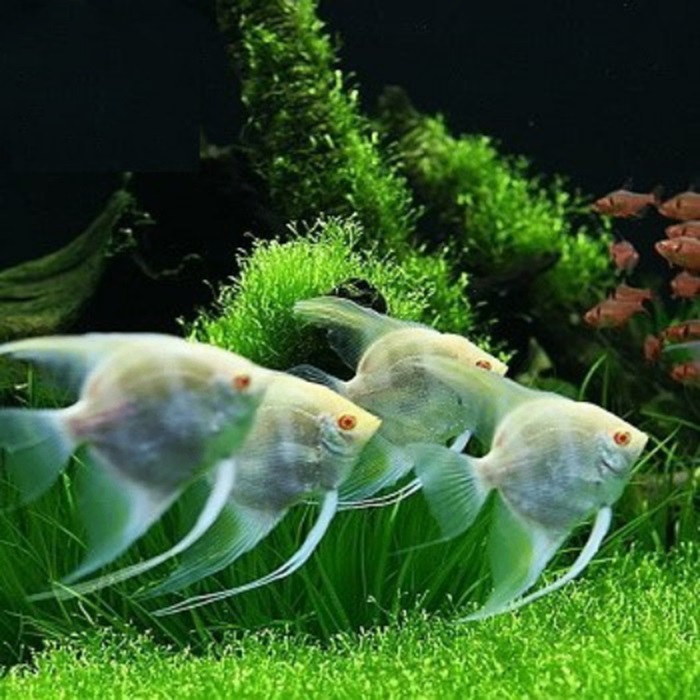
A school of white angelfish.
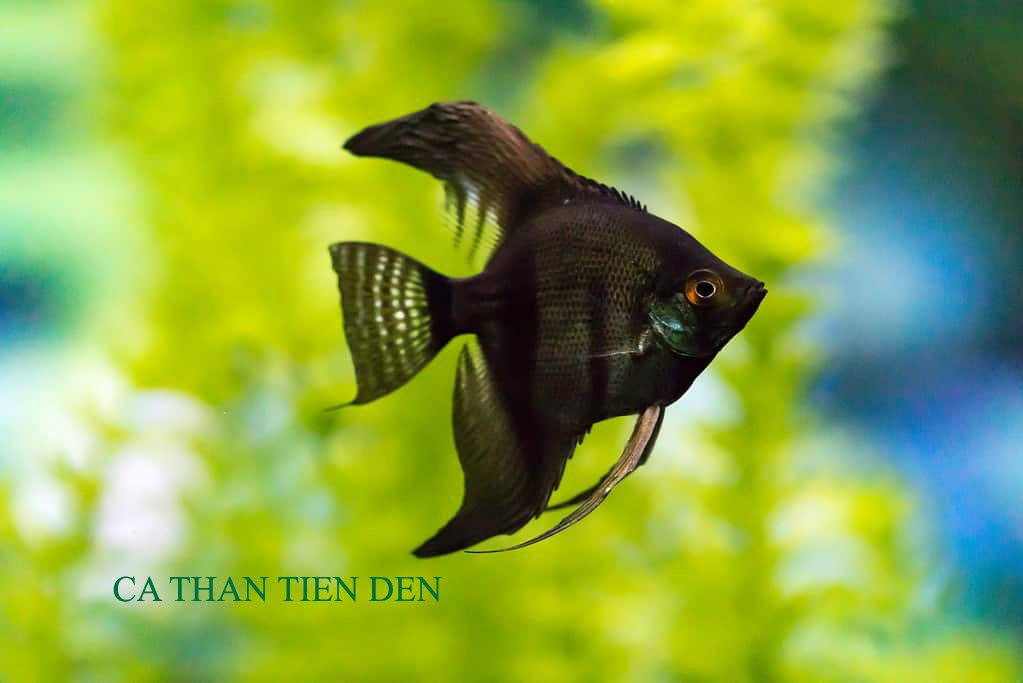
Image of black money fish, long fins.
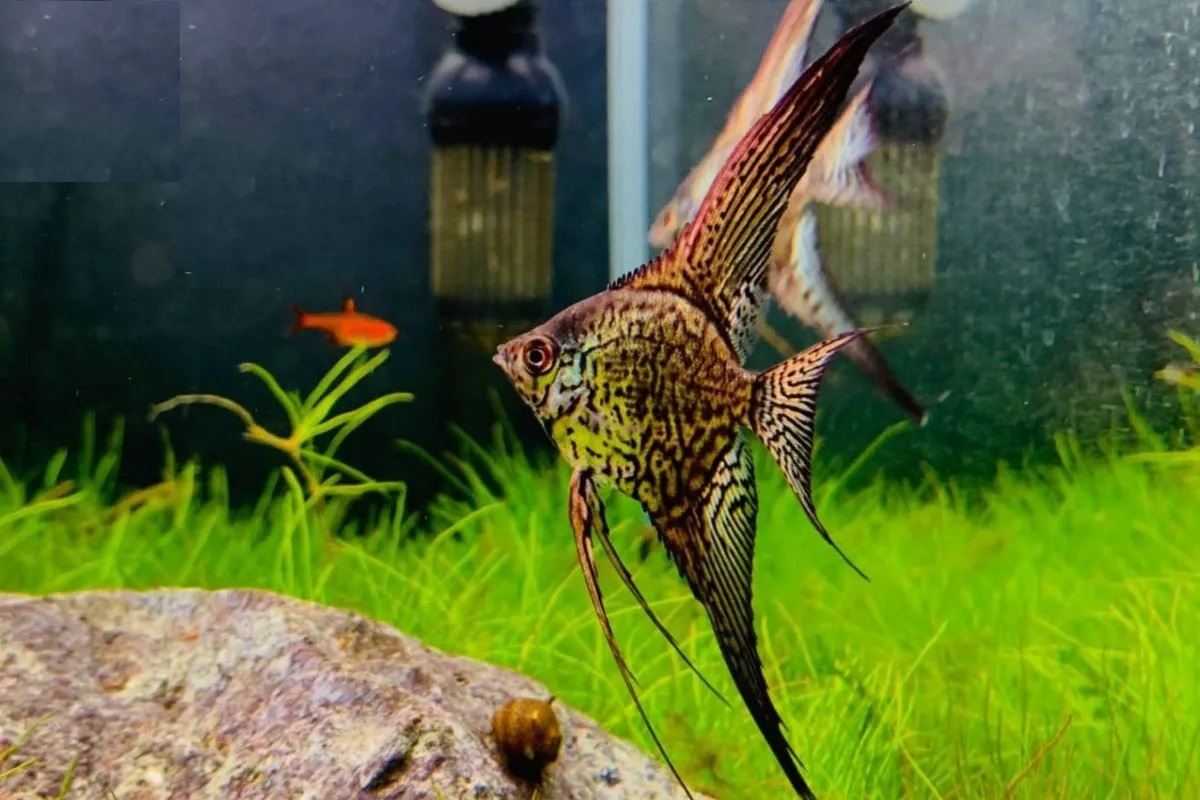
Leopard angelfish with unique colors.
.jpg)
Angelfish with three distinctive stripes.
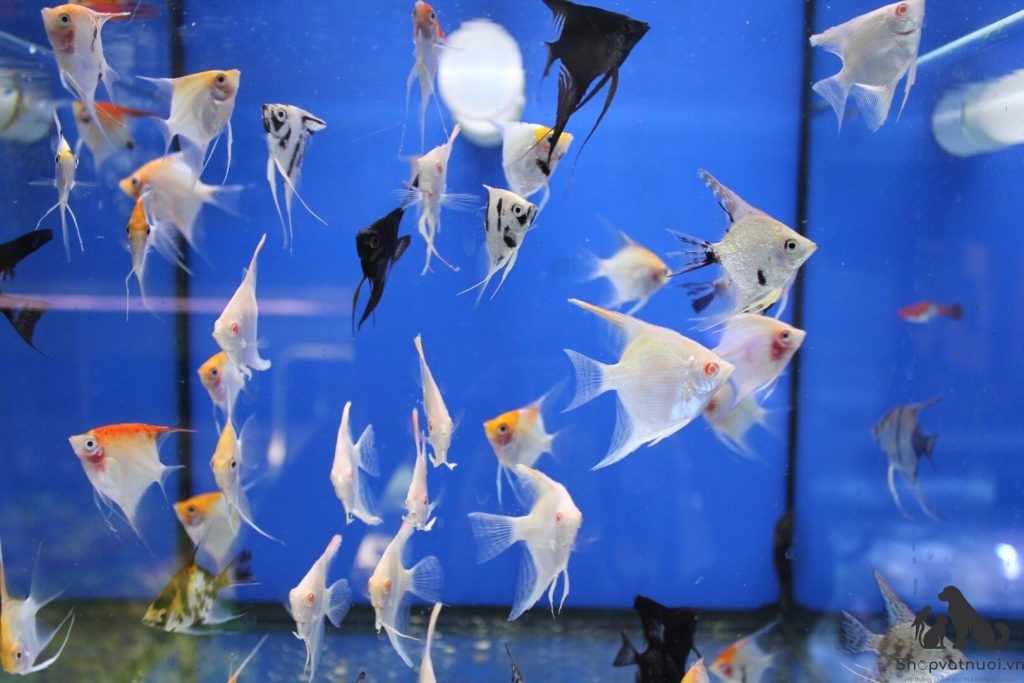
Mini angel fish tank.
Through the above article, nicefish.net hopes you have a better understanding of angelfish . This is a beautiful, graceful, easy-to-care-for, low-cost ornamental fish that is suitable for keeping in aquariums.
If you love ornamental fish and want to learn more about many fish species as well as good experiences, please visit our Blog section now to read many useful articles!
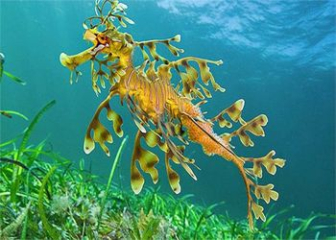
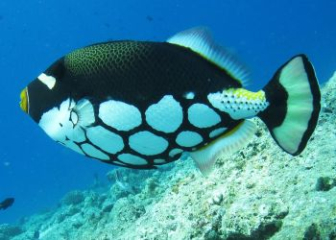
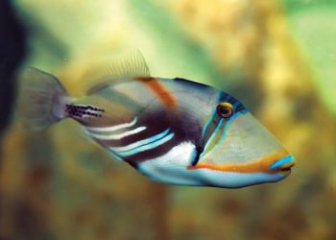
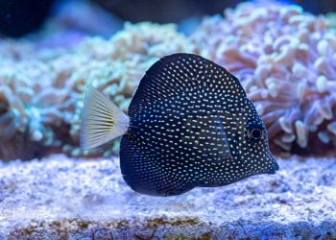
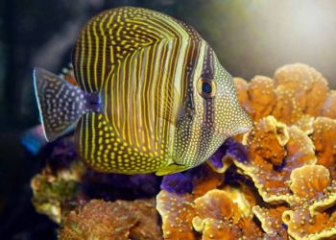
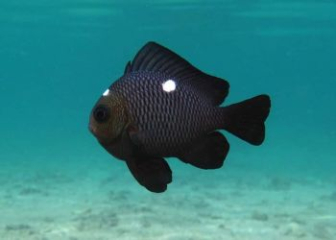
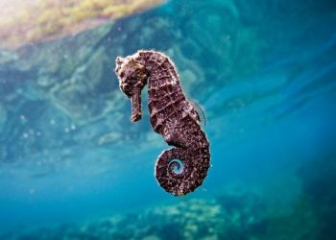






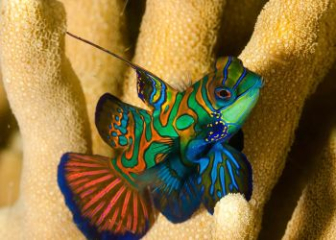

_350x250.jpg)


